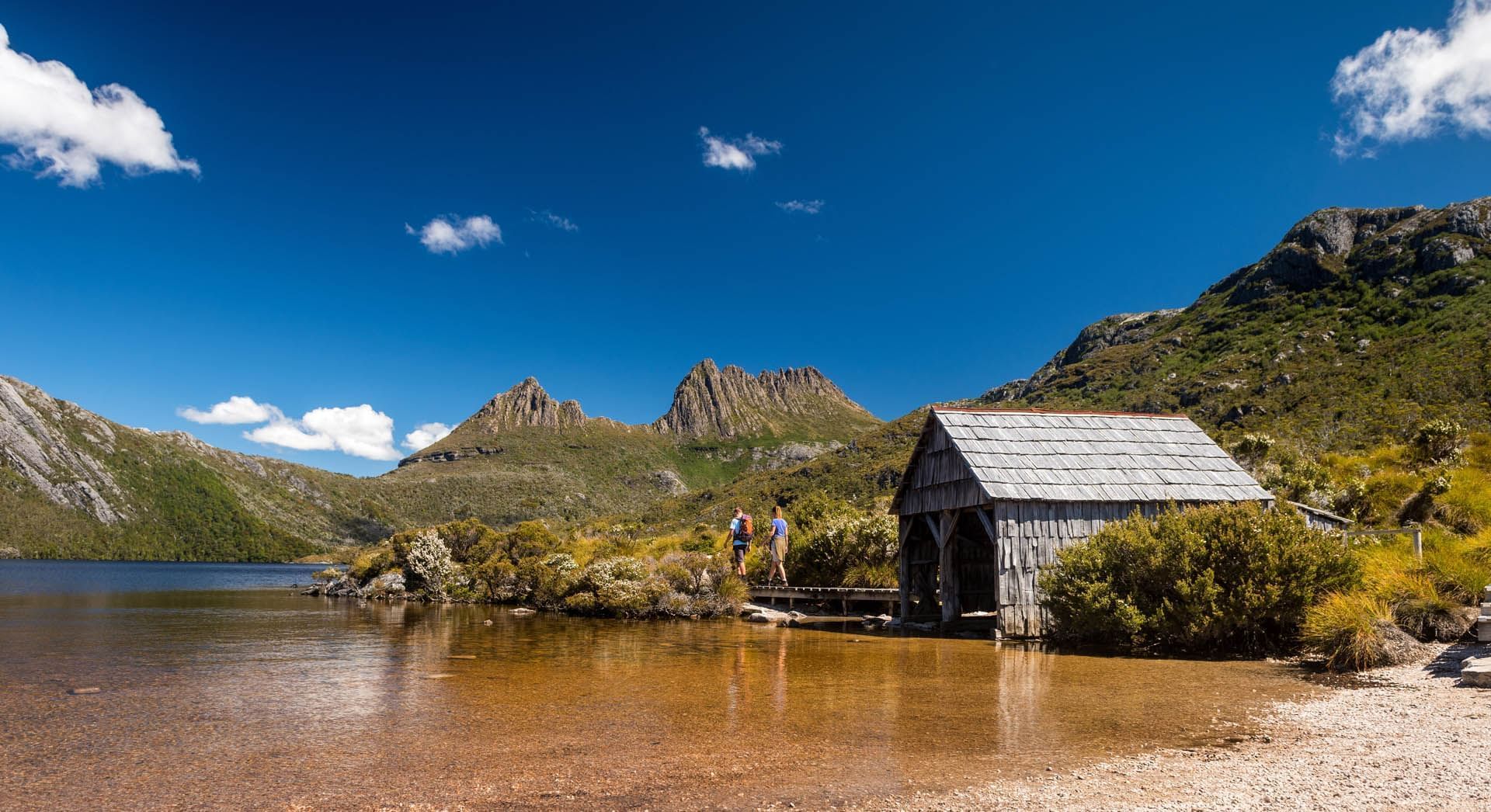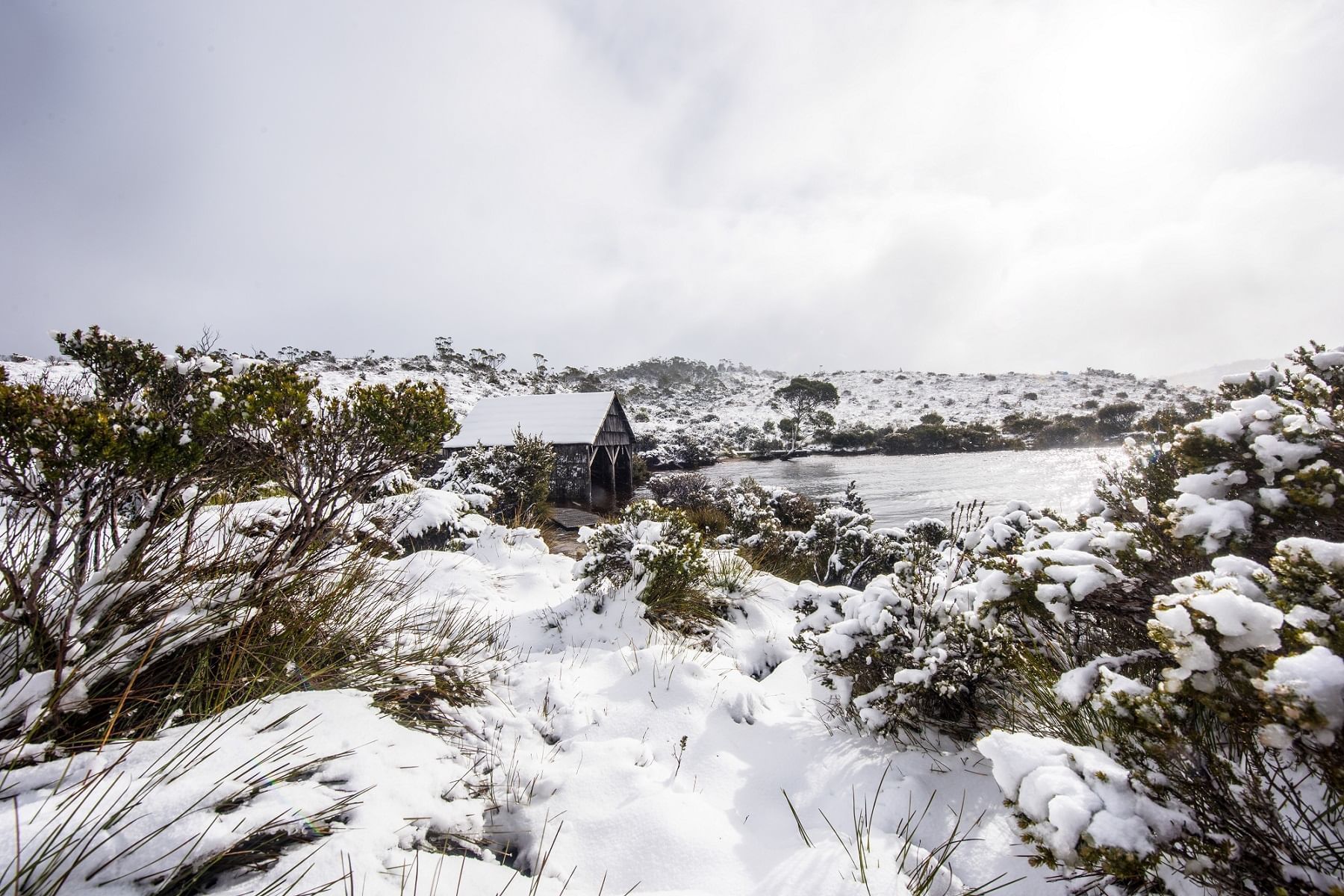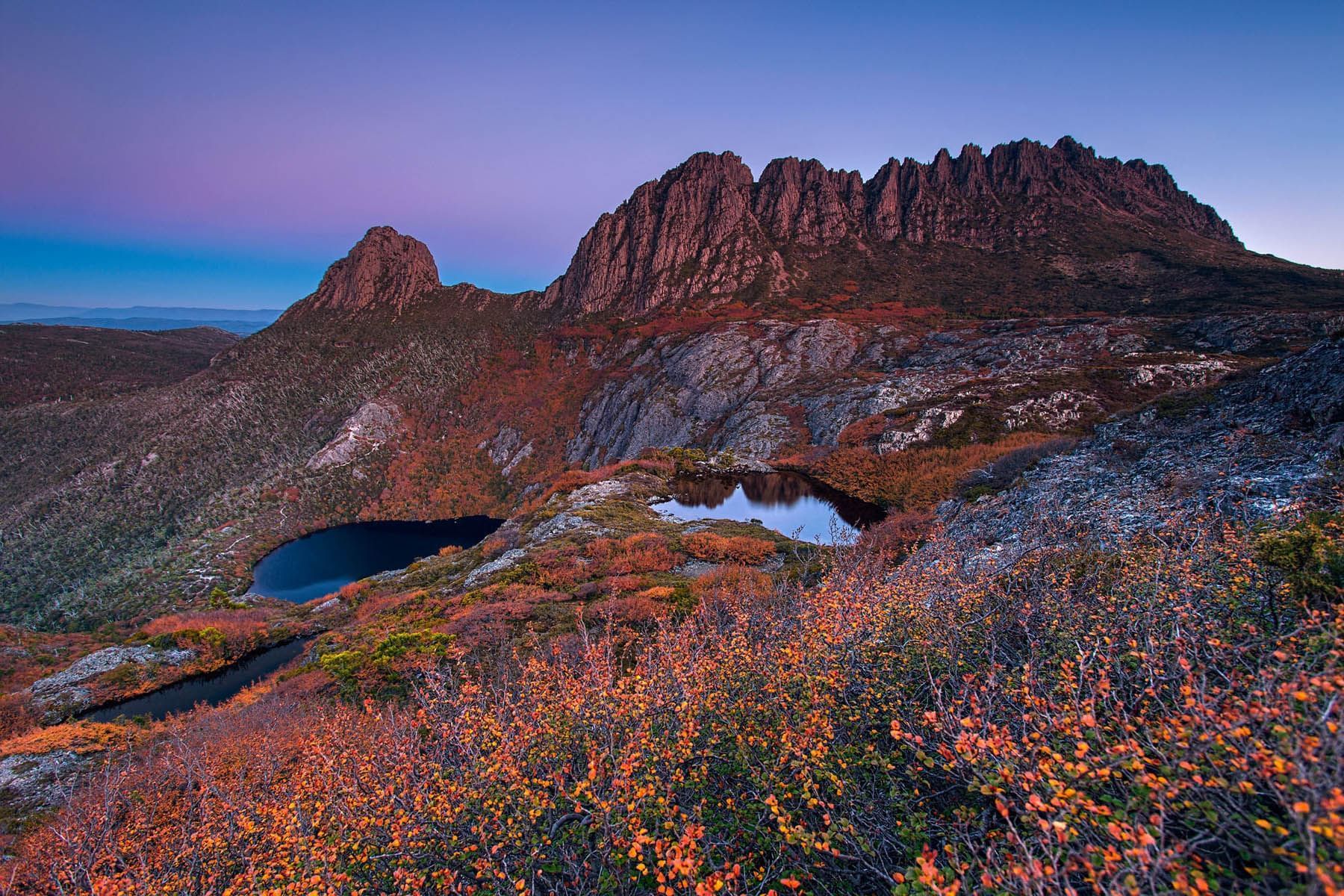CRADLE MOUNTAIN – LAKE ST CLAIR NATIONAL PARK
CRADLE MOUNTAIN – LAKE ST CLAIR NATIONAL PARK
This amazing part of the Tasmanian Wilderness World Heritage Area is made up of 161,000 hectares of spectacular wild beauty. Cradle Mountain marks the northern end of this national park that is famous for awe-inspiring craggy mountains, deep valleys, heathlands, button grass moors and ancient forests.



